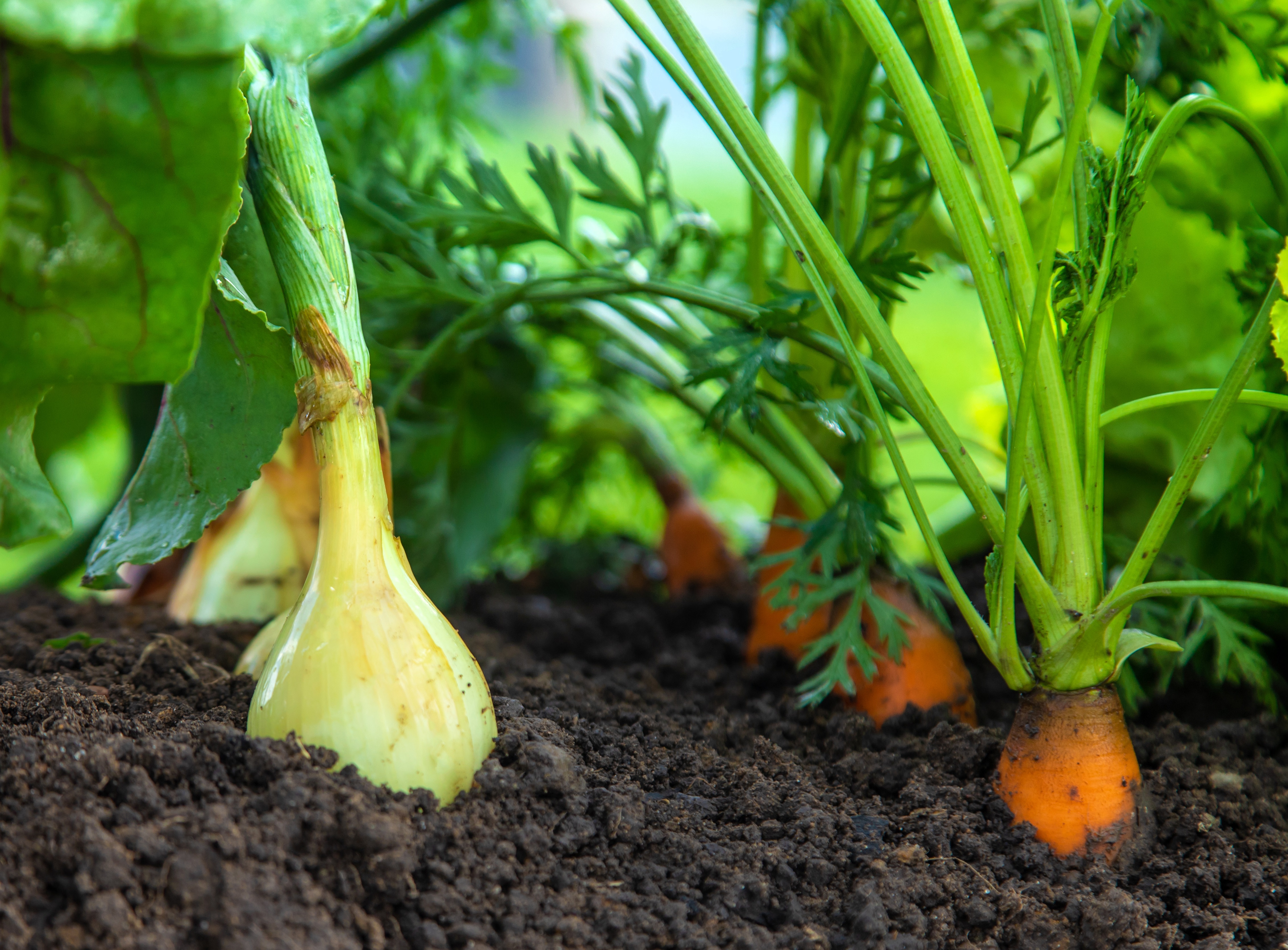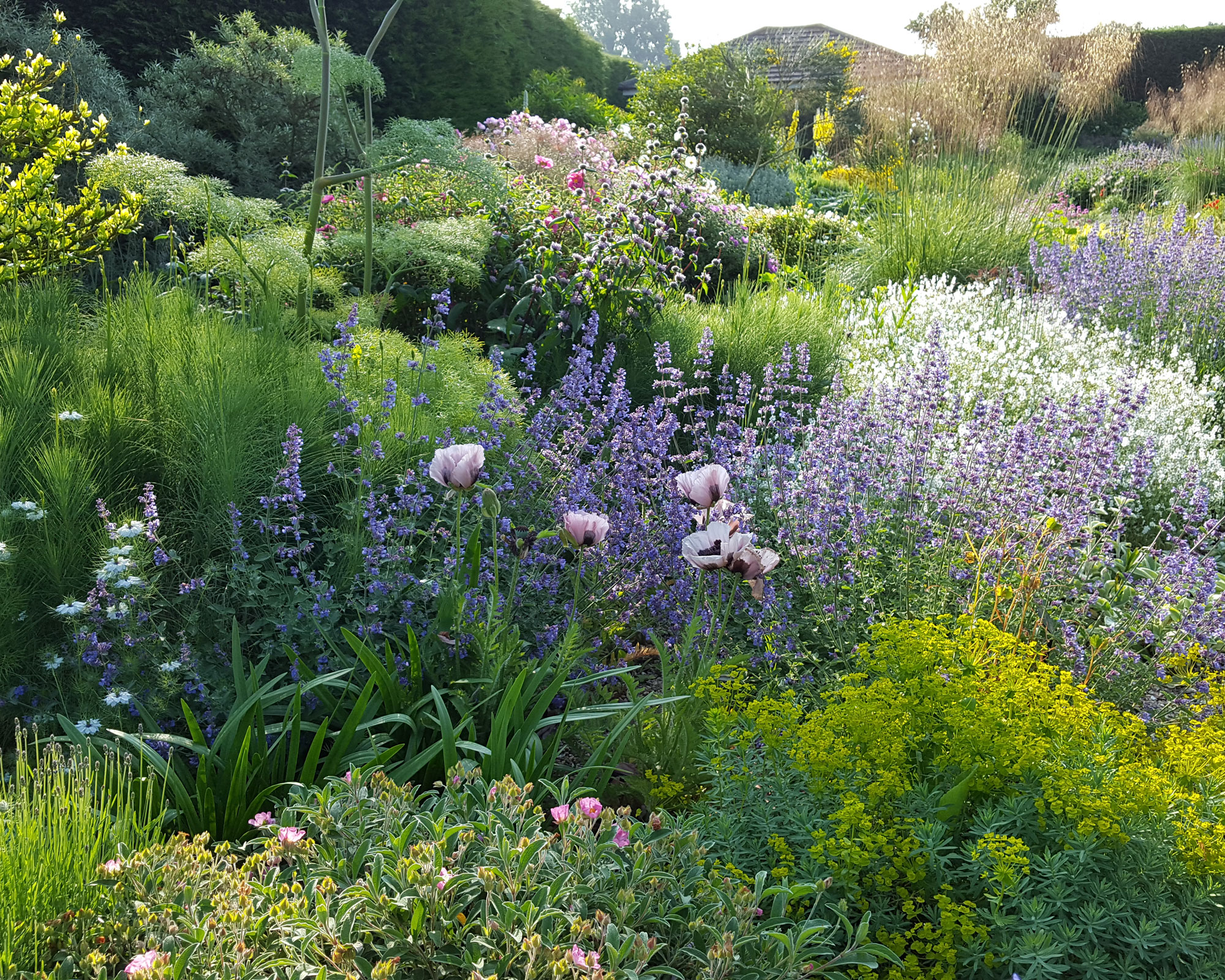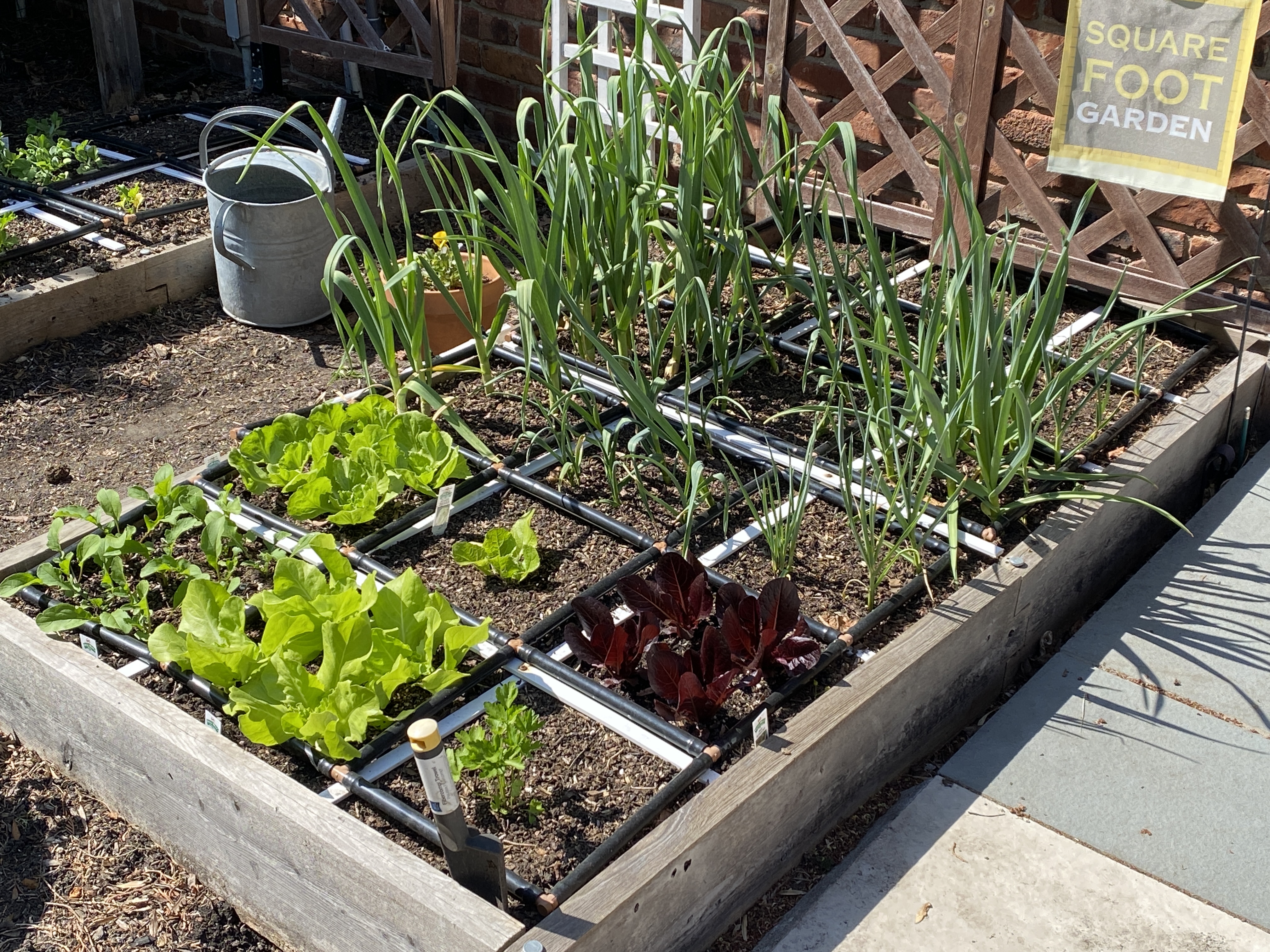
Whether you're a gardening novice or a more experienced green thumb, 2023 seemed to be the year for growing your own. Whether that meant your first foray into container planting or a larger commitment like raised beds, many of us put our gardening hats on this past year to beautify our outdoor spaces.
While the fundamental elements of planting vegetables, flowers, and shrubs are much the same, there are a few tips out there that could mean the difference between a flourishing modern garden and a drab-looking backyard. Here at Livingetc, we're about finding the best insider tricks that make your gardening efforts that little bit easier, and during this circle around the sun, we unearthed a fair amount.
To set you on the right path as we enter 2024, we've rustled up a list of the best planting lessons we've learned that we're definitely taking with us into the new year. Here are eight we love and think you ought to know about, too.
1. Underplanting potted trees

Underplanting containers sounds far more advanced than it is. In short, it's the practice of planting smaller plants beneath larger trees or shrubs within a container. 'These smaller plants can help to fill in the gaps in your garden and create a more lush, layered look,' says Reese L Robins, gardening expert at Just Pure Gardening.
From an aesthetic point of view, this trick is all about achieving a fuller look through your container gardening. Rather than one small tree or shrub, underplanting adds a dense layer of foliage underneath for more color, interest, and added depth. 'Creating depth is an important aspect of garden design that can greatly enhance its visual appeal,' says Richa Kedia, gardening enthusiast at Nursery Lady. 'By placing smaller plants in the foreground and larger plants in the background, underplanting can help create a sense of perspective in a garden.'
This clever yet simple gardening trend is a form of companion planting, and it comes with a host of practical benefits, too - one of those being weed suppression. 'Underplanting helps to suppress weeds by creating a dense layer of plants that shades the soil and reduces the amount of light that reaches it, making it more difficult for weeds to grow,' Richa notes. It's an easy trick to introduce to your garden for a fuller, brighter, and healthier display.
2. Soaking seeds before planting

Soaking seeds in water before planting is said to have several advantages when it comes to the success rate of seeds. According to Tony O'Neill, owner of Simplfy Gardening, the idea behind the process is that you soften the seed coat so the sapling can penetrate more easily, thereby accelerating germination. 'This process mimics the natural action of rainfall in the environment, which signals to the seed that conditions are favorable for germination,' he says.
If you're in a bid to make your flower beds healthier, fuller, and more vibrant in 2024, you can't go wrong by incorporating this small task into your planting routine. It's a quick and simple trick that could make a world of difference in your backyard.
3. Companion planting onions and carrots

Carrots and onions are a beautiful combination in a casserole, but as it turns out, they make great companion plants in your vegetable garden when grown side by side, too.
'These two root vegetables complement each other beautifully because onions emit a distinct scent that repels many pests, including carrot flies,' says Lina Cowley of Trimmed Roots. 'By interplanting onions and carrots, you create a natural deterrent system, keeping those pesky flies away from your precious carrots.' She goes on to add that the smell of onions can also help deter slugs and snails, which often feed on carrot seedlings.
Beyond mutual pest control, this pairing is perfect if you have a vegetable patch in a small garden. 'As onions don't need as much surface space (since they grow vertically with their shoots), carrots can easily spread out below,' notes Tony. 'This allows gardeners to optimize their garden real estate.'
4. Choose silvery-toned plants for dry gardens

This past year was a hot one, with the effects of climate change having a real impact on our gardening. This means many of us are having to adapt to warmer temperatures, drier conditions, and periods of drought by cultivating a dry garden.
When shopping for drought-tolerant plants, gardeners say you ought to look out for silvery-toned leaves since they often have unique adaptations that help them conserve water. 'These adaptations may also include a dense covering of tiny hairs or a waxy coating on the leaves, all of which help to reflect sunlight and reduce water loss through transpiration,' says Tony.
So, which plants fit within this category? According to Tony, firm favorites like lavender and Dusty Miller are two great additions to a dry garden, and both produce some delicate colorful flowers, too. Artemisia, Russian Sage, and Lamb's Ear are also shrubs with pretty pale leaves.
5. Use a cornstarch mixture to sow carrot seeds

It might sound like an odd culinary concoction, but this carrot planting hack uses cornstarch as a way of planting seeds evenly. 'Traditional methods of carrot planting involve a rather tiresome process of scattering the minute seeds in the soil,' explains Lina. 'The cornstarch hack simplifies this process by ensuring a controlled and efficient way to get those carrot seeds into the ground.'
The trick involves creating a paste of cornstarch, water, and carrot seeds which is then piped into rows in the ground so that your carrot seeds are evenly spaced. The main benefit is that it reduces the need for a process called 'thinning' whereby young carrot seedlings have to be pulled in order to make room for larger ones to grow. 'It means that overcrowding is no longer a concern, as each plant now has ample space to spread its roots and grow,' adds Lina.
6. Planting in threes

Planting in threes is one of the most rudimentary tricks on the list, but it's one that every gardener keeps up their sleeve. Planting flowers or shrubs in groups of threes - or any odd number for that matter - could be the one change you need to turn your backyard into a more flourishing oasis.
The main reason for this is that it looks more natural. 'Planting in odd numbers creates visual interest and dimension, preventing static or boring beds,' explains Diana Cox of The Gardening Talk. 'Mimicking nature's randomness is key for an authentic look.'
The visual effect of clusters of odd numbers can also add dimension to your flower beds or planters for a greater, more diverse visual impact. 'As an experienced gardener, I always keep the rule of threes in mind when designing spaces,' notes Diana. 'Threes are ideal for showcasing a focal point plant, and flanking them on both sides draws the eye towards it.'
7. Tomato tapping

Tomato tapping, as the name suggests, simply involves giving your plants an encouraging nudge while they grow and, while it may sound a bit woo-woo, it could be the key to a more bountiful crop.
'Tomato tapping is essential for pollinating the tomato plant by hand,’ says horticulturist Gail Pabst. As she goes on to explain, tomato flowers contain everything they need to pollinate already, so they just need to be moved around a little to stimulate growth. If you're growing your tomatoes outside, the natural elements probably offer all the tapping your tomatoes need. If they're growing in a greenhouse, however, then giving your plants a gentle tap or brush will help them pollinate and produce more fruits.
8. Square foot vegetable gardening

Last but not least, Square Foot Gardening is by far the best trick for growing your own vegetables in a limited space or urban area. 'This organic intensive raised bed gardening method uses grids and Mel’s Mix (a custom growing medium) to get optimal efficiency and vegetable yield from a small space garden,' explains Laura Bartholomew of Square Foot Gardening Foundation.
'This method of gardening also saves time, effort, tools, and water compared to regular vegetable plots,' notes Steve Bartholemew at The Gardening Foundation. 'Additional benefits are virtually no weeds, no digging or rototilling, no fertilizers, and no heavy tools are necessary.'
To get started with the idea, simply divide your growing space into small square sections measuring one square foot. It's a great alternative to vegetable container gardening and it's perfect for small backyards as you can incorporate as many square-foot plots as you like.
Keen to give one of these gardening hacks a try? Make 2024 your year for trying out new gardening methods and see what difference it makes to your space.







